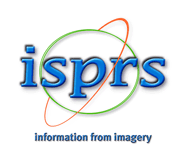Unsupervised Framework for Multi-Task Restoration of Natural Images under Adverse Weather Conditions
Keywords: Adverse Weather Condition, Image Restoration, Unsupervised Learning, Multi-Task Restoration
Abstract. Adverse weather conditions can be an obstacle to recognizing animals in images captured by camera traps. Obviously, recognizing night images becomes more difficult when artifacts such as snow, rain, fog, or haze appear during shooting. Typically, the model is trained to remove any artifact, and very rarely two imposed meteorological artifacts, such as snow and rain. The diversity of deep neural models indicates interest to this problem, especially using unsupervised learning when there are no paired images – without and with artifact. The aim of this study is to develop a generalized framework for natural image restoration under adverse weather conditions based on mutual GAN training to simultaneously generate clean image and improve artifact mask. The core of image restoration depends on the physical features of a particular meteorological phenomenon and can be selected for different weather conditions. Analysis of images included in the dataset captured by camera traps in Ergaki National Park, Russia, shows that the most common artifacts are snow in winter and fog in summer and autumn. These artifacts were given special attention when building the framework. Additionally, the CSD, Rain100L, and O-Hazy datasets were utilized to evaluate the effectiveness of the proposed method under various adverse weather conditions. This comprehensive approach ensures that the framework is robust and adaptable to different types of artifacts encountered in real-world scenarios.





